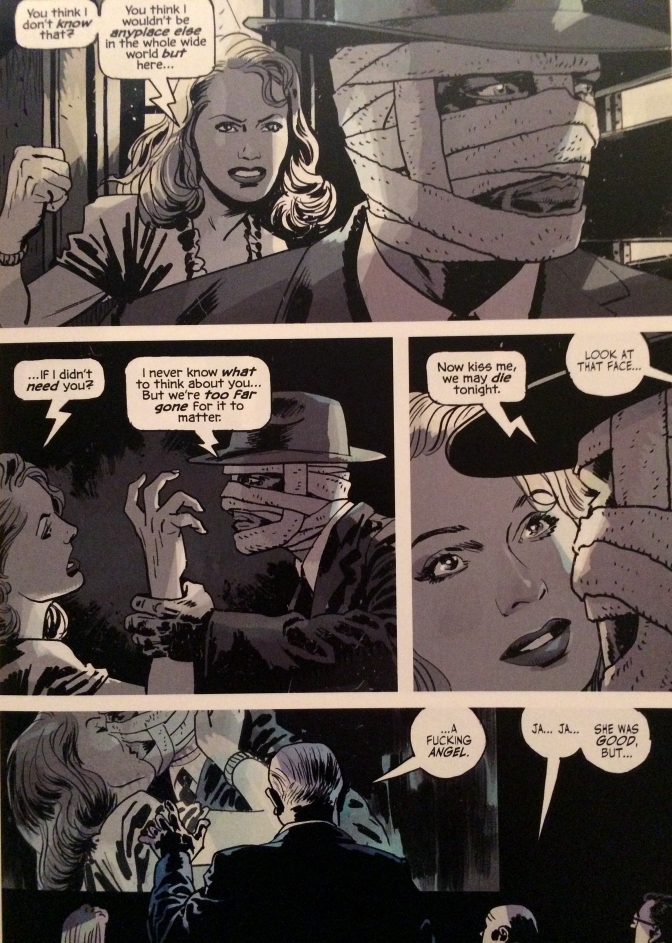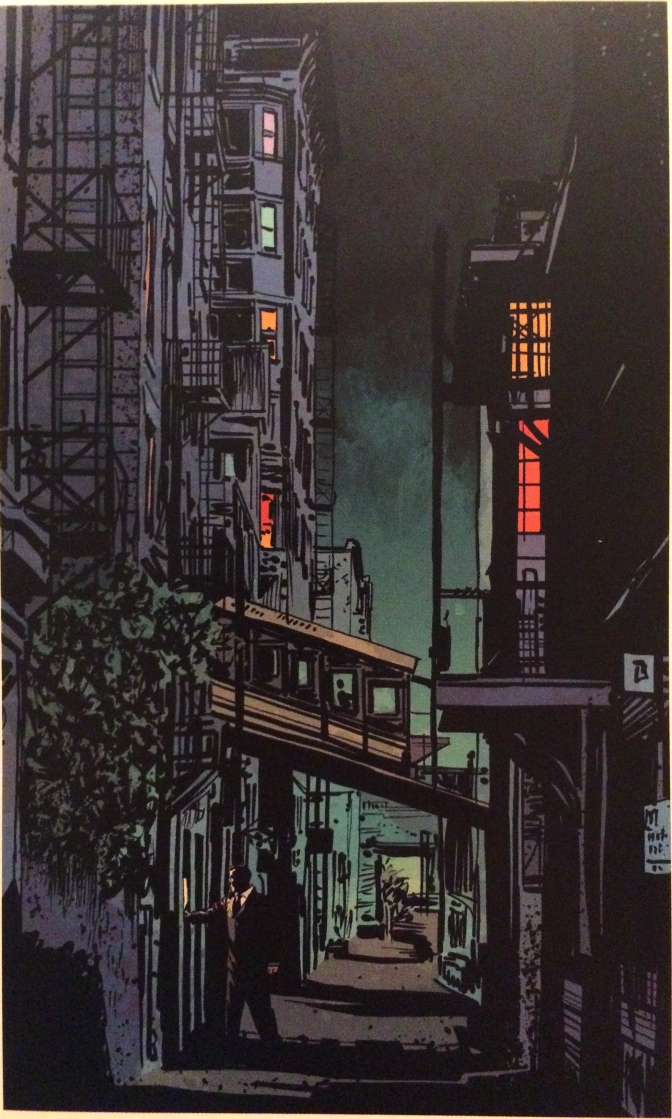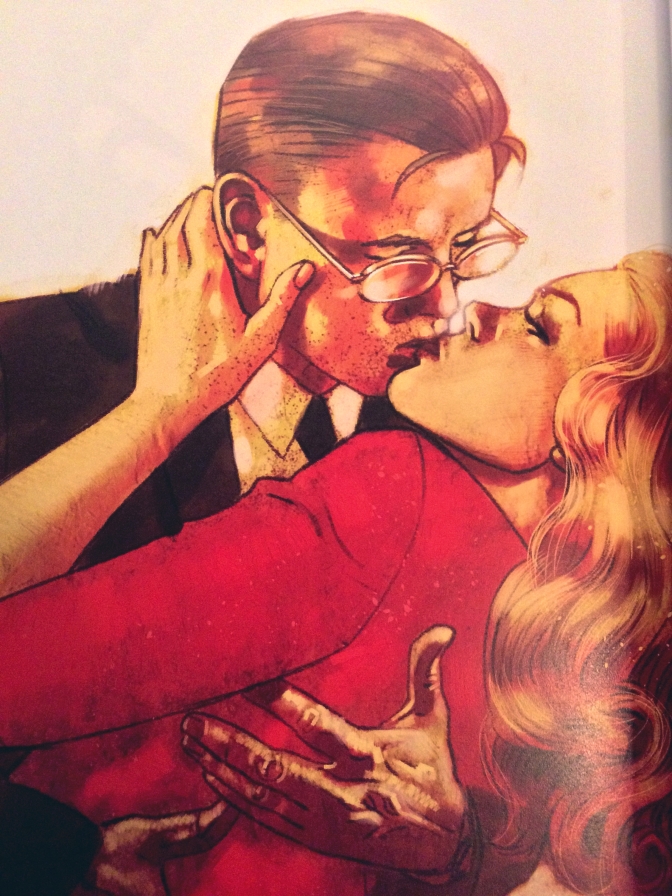There’s just something about 1940s Hollywood that I can’t get enough of, maybe it is the glamour juxtaposed with the seediness of it all, the moral purges, the occasionally great art that it created. I love the films of the era, films about the era and I’m a sucker for books set there and then.
So, dearest reader, you can imagine my joy when I discovered The Fade Out by Ed Brubaker and Sean Phillips which seemed to combine all the best bits from Raymond Chandler, the film Trumbo, James Ellroy and every picture of Hollywood royalty you have ever seen. It was a pricey tome but I can report, worth every cent*. In fact let us give praise to Jah here and now that booksellers don’t use a nightmarish tariff system whereby the better a book, the more you pay, because I suspect that The Fade Out would be way beyond my means.
I shall be discreet in terms of the plot, but let us say that it features a popular screen writer who is very much under pressure, his drunken friend, several major Hollywood stars**, Dashiell Hammett, a tragic yet strong heroine, another sort of heroine and more sleaze, scandal and outright nastiness than a presidential campaign. The story is relentless, yet lightly told, the characterisations are where The Fade Out scores big though, you find yourself rooting for people here, wanting them to have happier endings than the ones you fear have been written for them and I found myself thinking about them long after I’d closed the book. As I should mention on this day, of all days, there are some great, strong female characters in this book too, the women here may occasionally get treated, or act like, fluffy adornments but there is a whole lot of other stuff going on behind the scenes.
All Hollywood life is here in The Fade Out but be warned this is a (coughs) rather sexually explicit tome, several of the pictures surprised me with their frankness^ and there are some very distasteful things at the heart of the plot; which aren’t shown.
The artwork by Sean Phillips is perfect, evocative of the era, realistic and impressionistic too, the colouring by Elizabeth Breitweiser is subtle and great. There are fake promotional stills for various films throughout which are beautifully done, as are the covers of the individual comics reproduced at the end of the book. Another great feature in this graphic novel are a pair of interesting essays about Hollywood at this time, which do not have any direct bearing on the story, but again set the atmosphere – the feature on Jimmy Stewart’s war was absolutely fascinating.
I haven’t read a graphic novel as good as this one for a very long time indeed and so if you share my fascination with this time and place, or even if you just fancy a darn good read then I commend The Fade Out to you.

741 Down (still).
*obviously we don’t do cents over here on the civilized side of the Atlantic, but I’m getting into character, dollface.
**with fictional names that really don’t take too much decoding.
^they have been earmarked for future study, purely in order to desensitize myself you understand.










When you mention Ellroy, Chandler, Hammett you have my attention. CB lives in that era. I haven’t taken the plunge into this world. Maybe something new for me.
This looks ineresting to me. I especially like the artists rendition of Nash The Slash.
This is great but damnably pricey.
I love graphic novels. Loooove. I didn’t know I needed this until I read this post. Yowza!
It’s great but, for some reason, expensive.
OMG the Marilyn Lego.
Oh yes!
Very interested in this, though I’m not really a graphic novel type of guy. A fascinating period of time. Is this a ‘complete’ volume, thingy?
It is complete of itself. It was an expensive one to buy though unfortunately.
I don’t like spending money on anything other than records.
Occasionally good, of course.
You’re right about the explicitness. I want to jump in the pool with those two ladies, except I fear the wrath of Mrs 80smetalman. I think the main reason why Hollywood came out with such classics in the 1940s was because there was a war on in the first half of the decade. Those films gave people the chance to forget about that for and hour and a half or so. Then when the war was over, the war itself gave Hollywood the material for many good films in the second half of the 40s.
Good points, I agree totally too.
The bit about Jimmy Stewart’s war is amazing, the man was an out and out hero.
Agreed!
Lovely graphics.